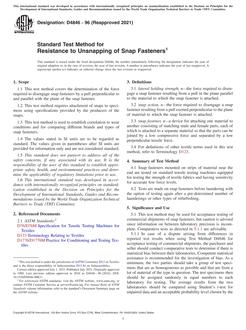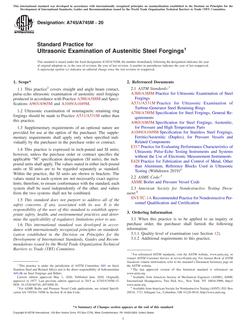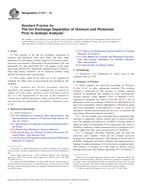1.1 This test method covers determination of the degree and rate of anaerobic biodegradation of plastic materials in an accelerated-landfill test environment. This test method is also designed to produce mixtures of household waste and plastic materials after different degrees of decomposition under conditions that resemble landfill conditions. The test materials are mixed with pretreated household waste and exposed to a methanogenic inoculum derived from anaerobic digesters operating only on pretreated household waste. The anaerobic decomposition occurs under dry (more than 30 % total solids) and static nonmixed conditions. The mixtures obtained after this test method can be used to assess the environmental and health risks of plastic materials that are degraded in a landfill.
1.2 This test method is designed to yield a percentage of conversion of carbon in the sample to carbon in the gaseous form under conditions that resemble landfill conditions. It is possible that this test method will not simulate all conditions found in landfills, especially biologically inactive landfills. This test method more closely resembles those types of landfills in which the gas generated is recovered or even actively promoted, or both, for example, by inoculation (codeposition of anaerobic sewage sludge and anaerobic leachate recirculation), moisture control in the landfill (leachate recirculation), and temperature control (short-term injection of oxygen and heating of recirculated leachate) (1-7).
1.3 This test method is designed to produce partially degraded mixtures of municipal solid waste and plastics that can be used to assess the ecotoxicological risks associated with the anaerobic degradation of plastics after various stages of anaerobic biodegradation in a landfill.
1.4 Claims of performance shall be limited to the numerical result obtained in the test and not be used for unqualified “biodegradable“ claims. Reports shall clearly state the percentage of net gaseous carbon generation for both the test and reference samples at the completion of the test. Furthermore, results shall not be extrapolated past the actual duration of the test.
1.5 The values stated in SI units are to be regarded as the standard.
1.6 This standard does not purport to address all of the safety concerns, if any, associated with its use. It is the responsibility of the user of this standard to establish appropriate safety and health practices and determine the applicability of regulatory limitations prior to use. Specific hazards statements are given in Section 8.
Note 1 – There is no known ISO equivalent to this standard.
Product Details
- Published:
- 05/01/2012
- Number of Pages:
- 6
- File Size:
- 1 file , 120 KB
- Redline File Size:
- 2 files , 210 KB


